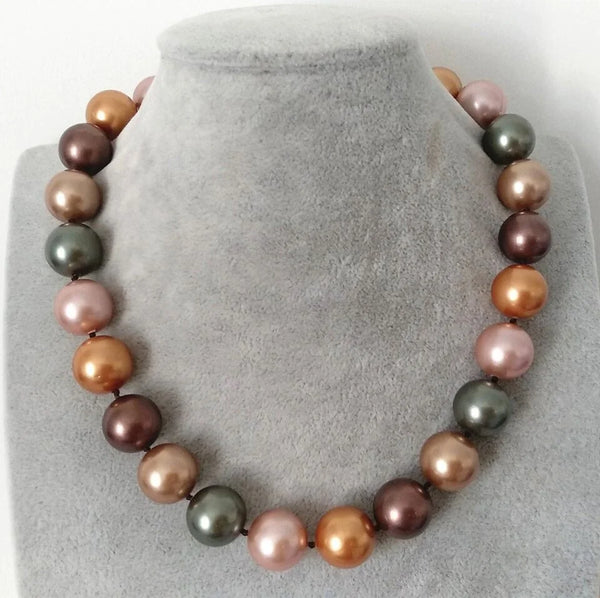
Today, we will explore a substantial question that is both important and not very clear to many. How do we differentiate real pearls from artificial ones? It's a good question, indeed!
Online, there are plenty of decent articles on this subject, and the topic has also been covered on TV and YouTube. But since the question has arisen, let's discuss it.
Spotting Imitations: Distinguishing imitations from real pearls doesn't require considering plastic beads that look like pearls. To the naked eye, these imitations are clear; they're lightweight, warm to the touch, and always look like cheap children's toys.
We will focus on more presentable imitations of real pearls. Today, there is an astonishing variety of VERY realistic-looking artificial pearls, many of which are sold under names like Majorica or "shell pearls."
Can You Spot the Fake Pearls by Looking at Them? Yes, and your first and most accurate tool is your eyes. Place the jewelry on a plain white sheet of paper and start examining the pearls inch by inch.
Questions to Ask During Examination:
- Are all the pearls perfectly round?
- Are there variations in their shape?
- Do you see any inclusions on the surface, such as wrinkles, dents, bumps, chalky spots, pinpricks, spots, etc.? These are all flaws inherent in real pearls.
- Can you see any lighter or darker areas directly beneath the surface when you hold the pearls to a strong light source? These spots are organic accumulations of conchiolin (one of the building blocks of mother-of-pearl). They will certainly not be present in imitations.
- Can you notice any subtle changes in the color of the pearl or its overtone, or are all pearls the same?
- Does the luster on the surface possess any visual complexity (depth, glow beneath the surface) or does the pearl have a "plastic" shine?
- Do you see any orient (a rainbow effect like on a soap bubble), faintly shimmering on the surface of the pearl?
Always remember, cultured pearls are a product of nature, even with human intervention. The mollusk always leaves its "fingerprint" on the pearl during its growth, so you will usually find some imperfection on the surface if you look closely enough. Artificial pearls, typically made of plastic, glass, or crystal beads coated with some mother-of-pearl, often look visually perfect, and almost without variations in shape, size, luster, or color/overtone.
Understanding the nuances of real pearls and the common traits of imitations can empower you to make informed decisions when buying pearls. The natural beauty of genuine pearls is unparalleled, and with these insights, you can confidently recognize and appreciate the genuine artistry of nature's work.
The pearls below are fake (shell pearls) - notice how unnatural are their colors, how perfect is the surface, how round they all are. And the price? Less than $50!


